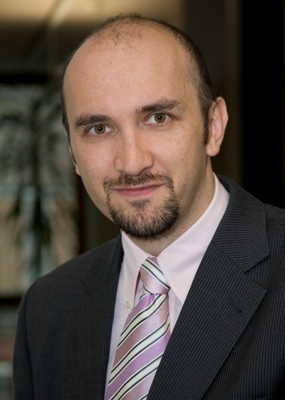Oct 3 2012
Most dishwashers are set to run around lunchtime and in the evenings, but is there a sufficient supply of electricity available from alternative energy sources at these peak times? Researchers are developing technologies for an intelligent power grid that provides a better balance between supply and demand.
 Wilfried Elmenreich
Wilfried Elmenreich
Energy is increasingly produced through the use of alternative methods, a growing number of electric cars can be seen on the roads, and more and more people are becoming aware of the limited availability of energy resources. Overall, the energy system is facing new challenges. Wilfried Elmenreich describes the consequences for the power grid: “Over the past 50 years, our power grid has barely changed. But now it has to become intelligent.” Elmenreich is manager of the research group “Smart Grids”, funded by Lakeside Labs and part of the Faculty of Technical Sciences at the Alpen-Adria-Universität.
“Smart Grids” represent precisely this type of intelligent power grid: Consumers actively participate in the combination of electricity and communication networks. By involving alternative producers of electricity, households, industry or communities can work actively and independently of the global electricity network. Systems of this kind, which supply their own energy, are called “Smart Microgrids”.
In theory, every household can use this system to purchase energy and – if energy is produced by alternative methods – to sell it. However, if all dishwashers are set to run around lunchtime, and all air conditioning systems are operating at full throttle during the afternoons, the system is quickly overwhelmed. “Intelligent agents can automatically suggest usage patterns for the devices, in order to optimise both energy consumption and price”, Anita Sobe, a member of the “Smart Grids” research group, explains.
"A system involving such a large number of actors is difficult to manage, and therefore requires self-organising algorithms and mechanisms”, Elmenreich further elaborates the technical background. Researchers are therefore working on the integration of existing individual solutions in one intelligent microgrid.